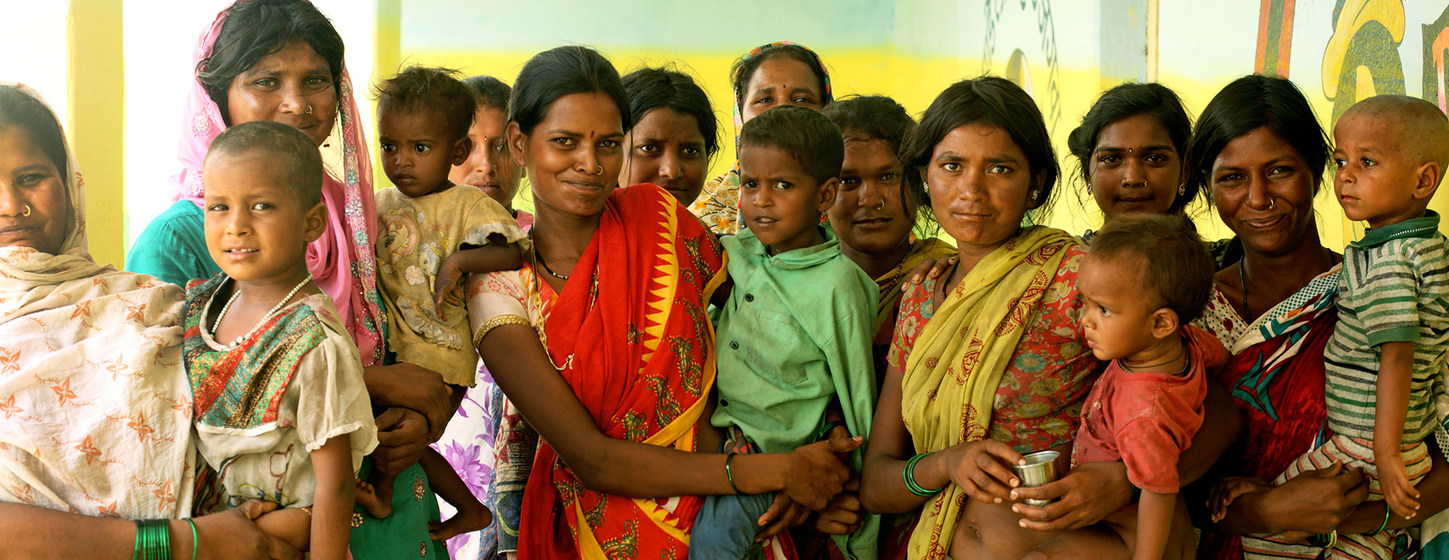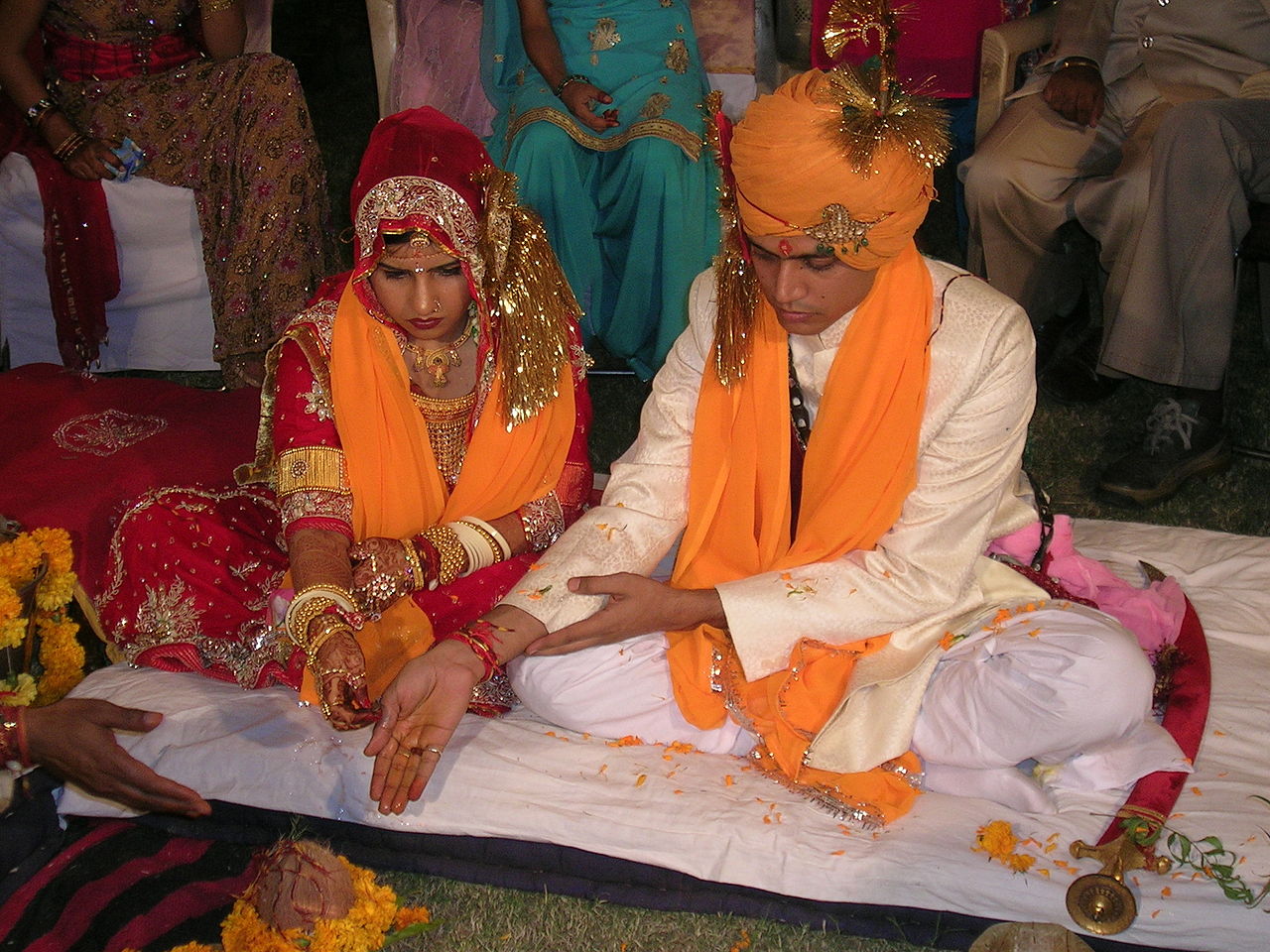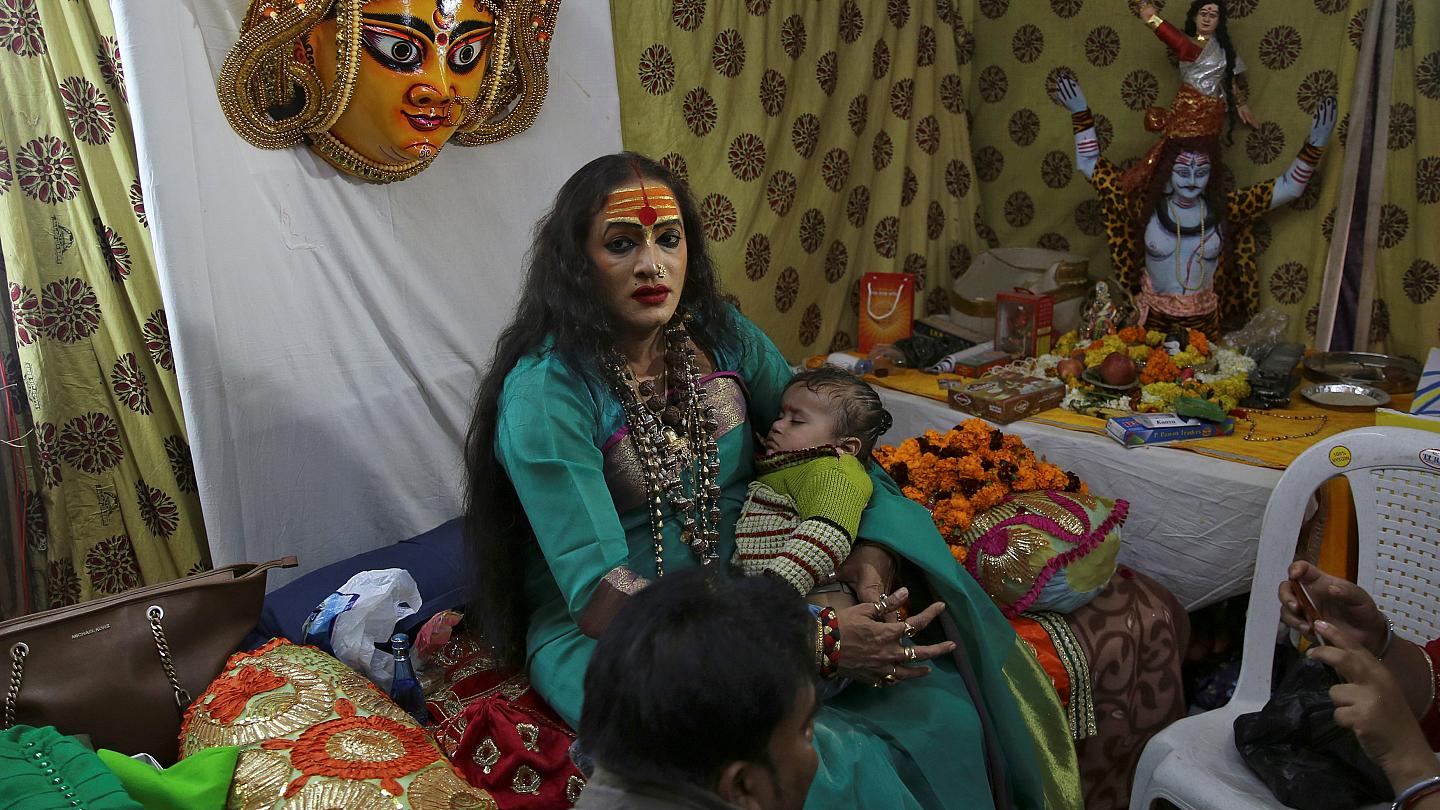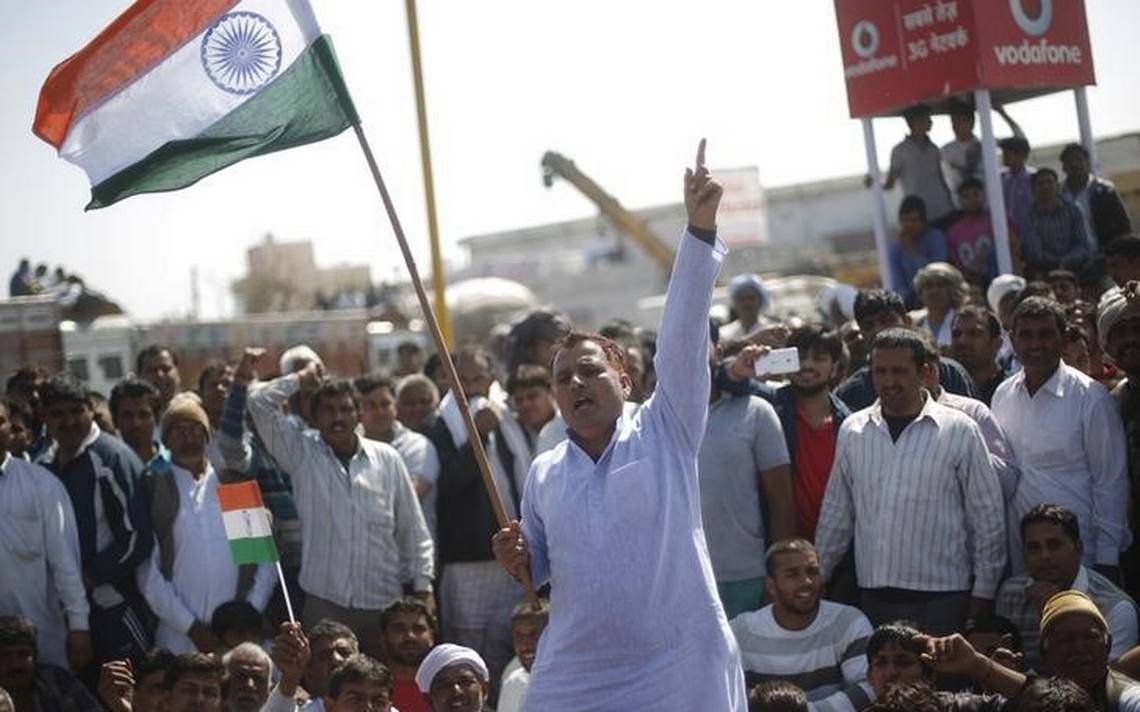Despite being abolished by law in the 1950s, the ancient hereditary stratification hierarchies imposed by the caste system established by Hinduism still influence the Indian social organization definitively limiting its development.

Indian Social Organization
According to Hinduism the soul is in a continuous reincarnation (saṃsāra), in this cycle the soul gradually tends to become more or less pure depending on the virtue with which the individual leads life.
Hinduism maintains that being born in a lower caste means that the individual in his previous life was a sinner, if on the contrary the individual is born in the highest caste, that of the Brahmins indicates that his soul is pure and, if he lives a virtuous life, you can reach nirvana and interrupt the cycle of death and rebirth. Otherwise, his next life will be that of a member belonging to a lower caste.
The caste system that determines the social organization in India has some determining characteristics, one of them is that it is made up of four main castes in addition to that of the Dalits, also known as outcasts or untouchables. These castes are closed groups, marriage is only allowed between members of the same caste and the children resulting from this union belong to the same caste as the parents.
Another characteristic of the caste system is that the castes are classified hierarchically according to their purity or impurity, but they are also classified according to their occupations and professions. In the caste system there are two basic concepts: Varna, which refers to color, and Jāti, “which refers to the form of existence.
Varna
According to Hinduism, the first Puruṣa (cosmic man, lord of being) was sacrificed and the castes were born from his body. Humans are classified into four basic castes depending on the part of the Purusha's body from which they were born, this caste defines the social status of the individual, whom he can marry and the type of work he can do. No one can try to pass from one caste to another during his life, the only way to advance or regress in social status is through reincarnation in successive lives.
Men and their roles in society are described in the four varnas, broad categories into which society is hierarchically divided: the Brahmins, the Shatrias, the Vaisyas, and the Sudras.
brahmins
According to the caste system that governs the social organization of India, the Brahmans are the highest caste, who claim to be the bearers of the same Brahman, which is the sacred power that sustains the universe. Formerly they were considered as gods among men. The functions of the brahmins are the study and teaching of the sacred texts of Hinduism, the Vedas and the smriti. They are also responsible for making sacrifices to the gods.
The brahmins have the function of being the guardians of the preservation of the teachings of the Vedas, they also have the obligation to transmit this knowledge to the individuals belonging to the other two superior castes, the chatrias, military and politicians; and to the Vaishyas, merchants and peasants. Brahmins should never pass on this knowledge to sudras, slaves, much less untouchables as this is a sin that is punishable by physical torture.
The teachings passed down by the Brahmins to the two higher castes include philosophy, religion, medicine, the arts, and military strategy. These teachings are the retribution that the Brahmins make to the society.
the chatrias
They are the second caste within the caste system that determines the social organization of India, they are below the brahmins and above the chatrias, vaishyas and shudras and of course the pariahs. This is the caste of warriors, of the military, that is, of those who exercise power and domination, in other words, the rulers. According to the Vedas the Rajá (kings) are chosen within the caste of the chatrias.
According to the Laws of Manu, the first obligation of a king belonging to the chatria caste is to protect his subjects, he also has the duty to expand the kingdom using "just means for the soul" and if necessary through conflicts. warlike. The main function of members of the chatria caste who were not kings was to participate in war, to die or be killed while fighting the enemy.
The Vaisyas
The Vaisyas are representatives of the third most important varna of the ancient social organization of India, which consisted of farmers, merchants, mercantile professions, artisans, landowners, herdsmen, and usurers. The Vaisyas had the typical roles of farmers and ranchers in the religious texts of Hinduism, but over time they became landowners, merchants and moneylenders. Belonging to a lower caste, one of their obligations was to provide sustenance for the higher castes.
In ancient India, free farmers, herdsmen, as well as some craftsmen and merchants in cities and towns belonged to the Vaisyas. From the first centuries of our era, peasants, farmers (as well as most craftsmen) lost their independence and began to be considered sudras, and most merchants were called vaisyas.
The Sudras
Sudras form part of one of the lowest of the four varnas of the Hindu caste system and the social organization of India. In theory, the caste of the sudras constitutes the lowest hereditary social class that is at the service of the other three superior castes, the brahmins, the chatrias and the vaisyas, however, according to the first Indian texts, they participated in the coronation of kings, They were ministers and even kings.
The sacred writings of Hinduism Dharma sastra do not allow sudras to receive literate education and they are only allowed to be taught some arts and crafts such as elephant training. Sudras were generally peasants and craftsmen. In ancient texts the sudra was described as the "grain giver" and his form of sustenance was described as by "the sickle and the ears of corn".
The ancient precept, "The Vedas are the destroyers of agriculture and agriculture is the destroyer of the Vedas", is shown as one of the reasons why the sudras were not allowed to learn the Vedas. Sudras were usually servants, peasants, potters and others. They were forbidden to engage in what the other three higher castes engaged in. The sudras were only rewarded with room and board, they did not receive any salary so they did not have property and could not leave inheritances.
The social status of the sudras differed from slavery only in that the sudras could not be employed in jobs considered "impure" and that they were not considered merchandise.
The Pariahs or Untouchables
In the caste system that governs the social organization of India, the outcasts or untouchables are outside the four traditional varnas. Being outside the varnas, the untouchables are only allowed to carry out the most marginal jobs, which include some such as leather work, the poorest farmers, landless peasants, day laborers, street artisans, among others.
The untouchables are not part of the four varnas. They are considered capable of contaminating members of the higher castes, especially Brahmins. The untouchables constitute between sixteen and seventeen percent of the Indian population (more than two hundred million people). Similar communities are found in the rest of South Asia, Nepal, Pakistan, Bangladesh, and Sri Lanka, and are part of the global Indian diaspora.
Because of their condition, outcasts are often victims of violence, frequently suffering lynchings, murders and rapes. In the state of Rajasthan, between 1999 and 2003 alone, there were more than 2006 outcasts raped and 2008 murdered. Massacres that used to include the rape of women and the murder of outcast men and women are reported in the XNUMXth century in Chondur, Neerukonda, Andhra Pradesh, Tamil Nadu, Punjab, Kherlanji, the most recent being Maharashtra (XNUMX) and Rajasthan (XNUMX). .
jati
Jati are called the endogamous social groups that constitute the basic units of the traditional structure of the social organization of India. Jati literally translates as "birth". The jati is a division of the social organization of India different from that of the varna system. According to the Anthropological Survey of India of 1993, the jati number four thousand six hundred and thirty-five, which is precisely the existing division in professions.
This system, which is quite similar to an organization of Indian society into corporations, perhaps predates the varna system. No jati crosses a linguistic border, and therefore all Indian language areas have their own system of jatis. No religious text of Hinduism legitimizes the jati system, contrary to the general opinion in the West, Hindu orthodoxy condemns it.
Often the surname of a particular individual indicates which jati or community he is associated with. For example, the surname Gandhi indicates a perfume seller, the surname Srivastava refers to a military clerk. Members of different jatis live totally separate. The role that a person plays in the social organization of India is determined by the jati to which he belongs and he can only marry members of his own jati since in this system endogamy governs.
In each jati there are different customs related to food and clothing, sometimes they even have their own language and in some cases even their own divinities, when this happens the people responsible for the cults are members of the jati itself and are not Brahmins . In Hinduism it is considered that belonging to a jati is an impediment to free oneself from reincarnations, that is, to access moksha, spiritual liberation.
In ancient times each jati was managed by its own caste council and it was the general custom to lead a completely autonomous life. The members of a jati inherit the professional activity of their predecessors. This was particularly true for castes specializing in crafts and services, as well as those engaged in herding and nomadism. The numerous castes were linked by barter relationships traditionally determined by products and services.
Evolution
During the colonial domination enters the principle of equality was included in the law, in the culture and in the social organization of India, the English also brought new economic activities that were open to all social castes, this created a certain degree of social mobility breaking with the caste system although this change was mostly taken advantage of by the higher castes for being better educated.
The Indian government that emerged after independence in 1947, implemented very active legislation that seeks to end the caste system, prohibiting discrimination in public places and establishing participation quotas for outcasts in universities, in the bureaucracy , in local and federal parliaments. But the formation of an urban middle class by the rise of office jobs and the evolution of work systems has proven to be the best way to overcome the labor caste system.
These labor advances have brought the relationship of the jatis to jobs in India's social organization to a standstill. In the countryside, however, the caste system is still important in people's lives. But in urban areas even the taboo of inter-caste marriage is increasingly being overcome.




